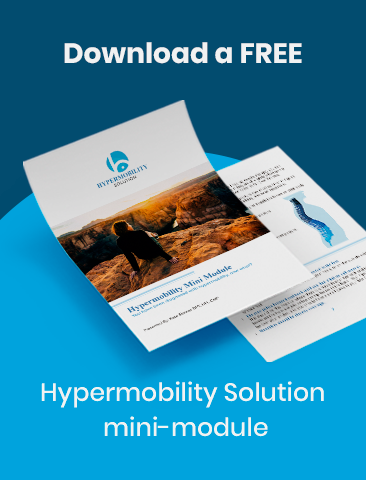Are Hypermobility and low back pain related?
Low back pain has become a public health issue in the United States. It accounts for many cases of people skipping work and recurrent treatment expenses.
This is one of the reasons why we tend to think they necessarily go together.
In this post, I go through a research article examining the relationship between joint hypermobility and low back pain.
Title of the article
RELATIONSHIP OF JOINT HYPERMOBILITY WITH LOW BACK PAIN AND LUMBAR SPINE OSTEOARTHRITIS
Reference
Goode, A.P., Cleveland, R.J., Schwartz, T.A. et al. Relationship of joint hypermobility with low Back pain and lumbar spine osteoarthritis. BMC Musculoskelet Disord 20, 158 (2019). https://doi.org/10.1186/s12891-019-2523-2
Summary of The Article – Hypermobility and Low Back Pain:
This review article looks to determine if there is a link between chronic low back pain and joint hypermobility by analyzing three large studies.
They did not find hypermobility associated with chronic low back pain and lumbar osteoarthritis. They also discovered that trunk flexion was inversely associated with chronic low back pain and spinal osteoarthritis.
This means that people with a better ability to bend forward and touch their toes had less chronic back pain and back arthritis.
What This Study Means to You
The good news is you may not be at a higher risk for chronic back pain or arthritis because you have hypermobility.
However, flexibility as you age, such as bending forward and touching the floor, decreases your risk for symptomatic arthritis.
Limitations and Considerations of This Study:
The article looks at data from 3 large studies. Women of childbearing age were excluded from x-rays in 1 study. They also feature minimal representation of minorities.
They did not look at all the symptomatic population, but inclusion was related to hand arthritis only.
Additionally, researchers might not have picked up on older individuals who may have previously had hypermobility but no longer qualified through the Beighton scale (as flexibility decreases with age).
Your Take-Home Summary:
- You need to take care of your back. Everyone is at risk for back issues.
- If you experience this issue that isn’t necessarily related to your hypermobility, and your hypermobility doesn’t put you at a higher risk of developing lower back osteoarthritis.
- In fact, your increased flexibility could be a protective factor while aging and developing low back issues related to osteoarthritis.

About Kate

Kate Skinner is a Doctor in Physical Therapy, co-founder of Great Divide Physical Therapy, and creator of Hypermobility Solution.
Recent Posts


